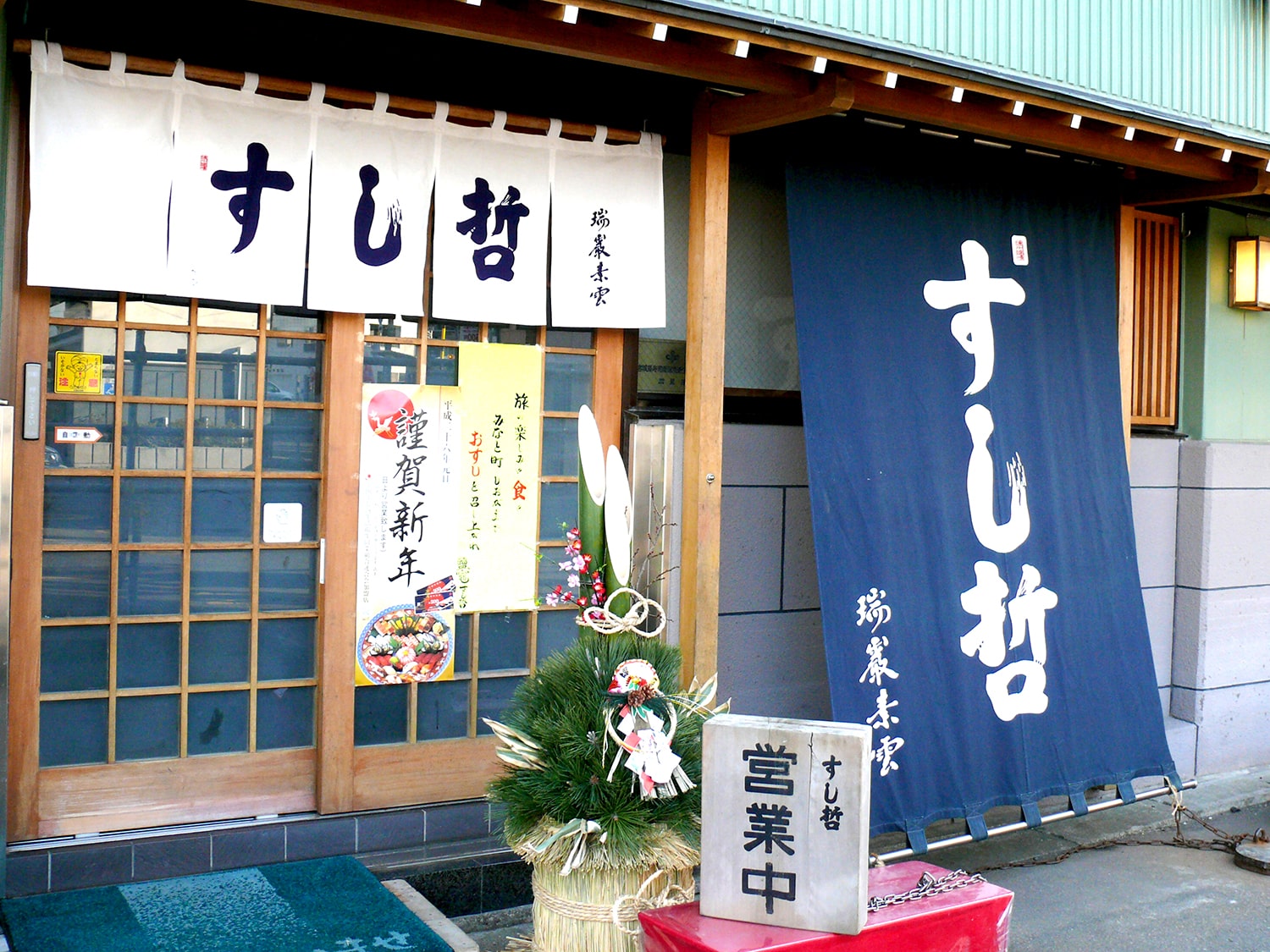
Tuna Town
OVERVIEW
Two types of ocean currents intermingle off the coast of Miyagi Prefecture, so the waters there offer some of the best fishing in the world. In Shiogama, well-known sushi restaurants line the streets and serve many types of fish. They compete to make the most delicious sushi using proprietary flavors and techniques. Try the sushi made with Sasanishiki rice, a specialty of Miyagi Prefecture.
Among the best sushi is the exquisite raw bigeye tuna that is caught in Shiogama Harbor. Of the bigeye tuna that are brought into Shiogama Harbor in early autumn through winter, only those fish that fulfill exacting criteria regarding size, color, and luster are offered as Sanriku Shiogama Higashimono.
TIPS
Shiogama has the largest catch of fresh bigeye tuna in Japan (according to the Shiogama City website), as well as the most sushi restaurants per square kilometer in Japan.
DETAIL
PERIOD Year-round
URL http://kankoubussan.shiogama.miyagi.jp/tourism/en/map.php#map-section02


Reccommend
Local Tours
Using local guides, we provide many tours that let you discover and experience
the wonders of Japan lying hidden in the “everyday” of the nearby area.
TOUR.01
Spirit of Japanese Sake in Shiogama|Sake and Sushi Pairing in Foodie Heaven Shiogama
TOUR.02
Foodie Tour in Shiogama|The ultimate 'Foodie' tour in sushi and sake paradise, Shiogama!
TOUR.03
Perfect ‘Hanami’ Picnic at Shiogama-Jinja (Shinto)Shrine|Enjoy the Spring tradition of 'Hanami' at a national treasure!

SHIOGAMA city
In the spring, Shiogama Sakura cherry blossoms bloom at Shiwahiko-jinja Shrine and Shiogama-jinja Shrine, a nationally designated natural monument. In the summer, the extravagantly colored gozasen boat crosses the bay with over 100 other ships. In the autumn, the leaves change color, and, in the winter, you can enjoy Sanriku Shiogama Higashimono and the abundant seafood that is offered in Shiogama, which boasts some of the biggest catches of fresh Pacific bluefin tuna in Japan. Shiogama is a seaside town that can be enjoyed all year round.

Key Person

A port town where a rich food tradition meets the culture of a temple town.
Seafoods Akama Co., Ltd./Shunsuke Akama
Shiogama is a port town where the rich food tradition that was brought about by the seafood that landed at its wholesale market meets the historic culture of a town built around Shiogama-jinja Shrine, the most revered shrine in Mutsu Province. Autumn and winter are seasons for Shiogama’s famous Sanriku Shiogama Higashimono, the brand name for its big-eye tuna, while its local sakes, Urakasumi and Abekan, have many fans across the country. The name “Shiogama” refers to a traditional cooking stove that is used for making salt and derives from the town’s long history of salt production. My company also produces “seaweed salt,” a salt that is rich in seaweed components and combines sea water from Kamanofuchi in Matsushima Bay with the bay’s sargassum seaweed. This year, Shiogama is introducing Gama Coins, a local electronic currency that aims to combine local currency and cashless payments. It can be used at all participating stores in the city, so be sure to give it a try.
Specialty Products
Shiogama has many traditional specialties—including plentiful seafood, sake from a historic brewery, and the salt (seaweed salt) from which the city gets its name. Oyster and nori cultivation prosper in the Urato Islands that float in Matsushima Bay, and, at the local lodges, you can enjoy unique regional cuisine that is made with the island’s seasonal seafood. Visitors to Shiogama should certainly stay in the Urato Islands to fully enjoy the beautiful scenes of the bay and the delicious cuisine.
Natural Environment
Located to the southwest of Matsushima Bay, Shiogama Bay has been written about in Japanese poetry since the Heian period, when it was called “Chiganoura.” Matsuo Basho is said to have visited this place and set sail for Matsushima from here. Sailing across Shiogama Bay, you can see the Urato Islands come into view: Katsura Island, Nono Island, Sabusawa Island, Ho Island, and others. In the untouched nature on these islands, one can enjoy seasonal flowers such as the tunnel of camellias or the meadow of field mustard flowers.
Historical Person
Tsudayu and Sahei
Tsudayu, 1744 - 1814
Sahei, 1762 - 1829
Tsudayu, a sailor from Sabusawa Island in the Urato Islands, was shipwrecked while sailing from Ishinomaki to Edo. During the Sakoku period of national isolation, he sailed around the world with Sahei, Gihei, and Tajuro.
Chonan Izumi no Kami
1580 - 1654
Chonan Izumi no Kami was from Awanokuni (now Chiba Prefecture). Around 1615, he moved to Sabusawa Island, where it is said that he built the foundation of Sabusawa Harbor.
Kikuchi Yuji
1838 - 1900
Kikuchi Yuji was appointed as kocho (equivalent to a mayor today) at the start of the Meiji era. In 1885, he repaired the harbor and waterways of Shiogama, which had been struggling after the Meiji Restoration.
Area Access

From Sendai Station
30min
【TRAIN】 From Sendai Station approx. 30 minutes to Honshiogama Station on the JR Senseki Line

From Matsushima
50min
【CRUISE BOAT】 From Matsushima approx. 50 minutes by Matsushima Island Sightseeing Boat




















